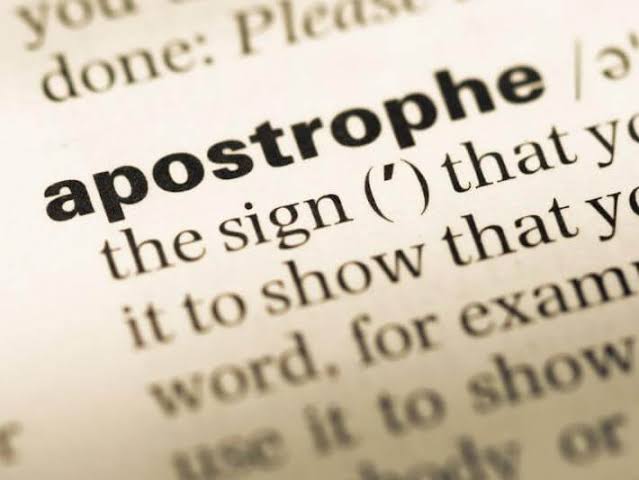Apostrophe. I guess you must have heard of the word, “apostrophe”. In class. From your teacher. From your colleagues. Through textbooks. What do you notice about it?
You do not notice anything about it? You do?
I was confused too, early while in secondary school. But I soon realised there was nothing to be confused about. And that’s the good part.
Apostrophe belongs to a category of words called polysemous words. Bank is another word in this category. For example, let us use bank in a sentence:
(1) I went to the bank yesterday.
I know what you are thinking — that I went to that place or gigantic building where people save and withdraw money as well as perform other financial transactions. No?
You are wrong. The bank I intend in the sentence is the edge of a river, lake or any other watercourse. Surprised? Well, the word “bank” has more than just a meaning. That is the idea behind polysemous words. They have multiple meanings or interpretations.
Same applies to apostrophe.
Apostrophe could be the text character (‘) which serves as punctuation mark in writing. For the sake of distinction, we may call this orthographic apostrophe. The sign is often used to show possession in sentences and contraction of words as in examples 2 and 3.
(2) Lanre collected Tolu’s keys.
(3) I’m busy.
In example (2), apostrophe is used in Tolu’s keys to show possession — that Tolu owns the key. And in example (3), I’m is a contraction of I and am.
The other apostrophe has to do with the field of literature. Apostrophe is an expression addressed to some abstraction (idea, quality, etc) or someone that is not physically present. In this case, the addressed is absent but talked to as if it were physically present. We will call this literary apostrophe. Examples:
(4) Oh, Death, be not proud.
(5) (Night), Your jealous eyes quench.
In example (4), Death is addressed as if it were physically present. And in example (5), Night is addressed as if it were a human being with eyes and naturally capable of being jealous. It is not present in the human sense of physicality.
You have further examples? You may use the comment box.
You May Also Like:
 WHATSAPP: Click HERE to join the new Literature PADI WhatsApp group to receive latest updates on your phone and for further literary discussions!
WHATSAPP: Click HERE to join the new Literature PADI WhatsApp group to receive latest updates on your phone and for further literary discussions!











